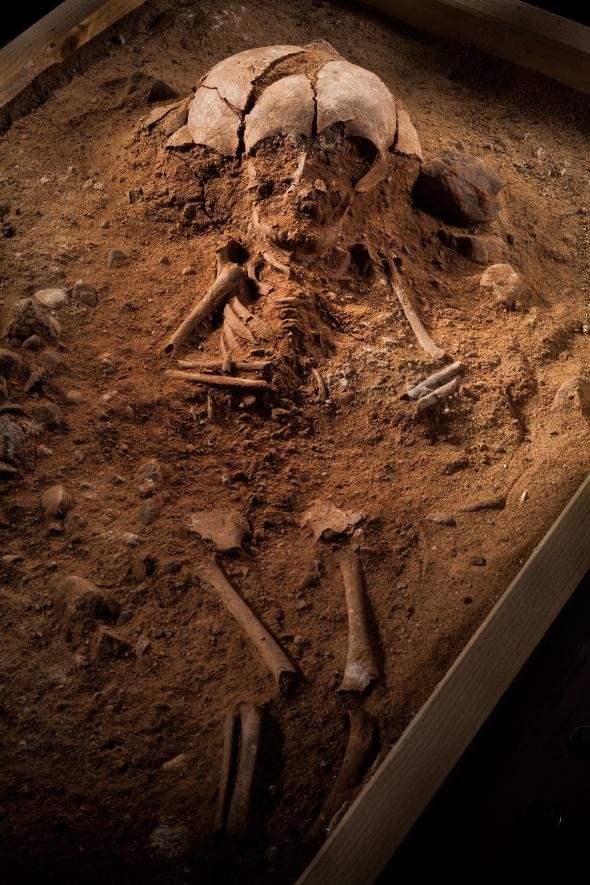MYSTERIOUS GRAVES UNEARTHED IN EUROPE'S OLDEST CEMETERY
In 1962, German archaeologists found an ancient burial site about fifty miles north of Berlin. This cemetery from the Mesolithic period is considered one of the oldest in Europe.
In a rare find, German archaeologists excavated a Mesolithic cemetery named Gross Fredenwalde situated on Weinberg Hill overlooking the plains below. The discovery was made when a radio mast was to be erected in Groß Fredenwalde in the Uckermark in the 1960s, when bones were suddenly unearthed.
This burial ground dates back at least 8,500 years, and during this time period, humans were hunter-gatherers leading a nomadic lifestyle which is why this find is so unusual.
Isotope values of all individuals indicate an aquatic component in the nutrition, matching a hunter-gatherer-fisher lifestyle. Anthropological analysis shows few signs of diseases and no traces of violence. The lack of settlement traces probably indicates that the Groß Fredenwalde location was chosen as a specific landmark to communicate identity/territory by a certain group.
The graves date back to 6,200 B.C. and it is considered one of the oldest cemeteries in Europe. The reason why this spot was picked raises more questions than answers. The ground is rocky which would make digging graves an arduous task. Hunter-gatherers usually buried their dead close to their homes. There was no water source nearby, necessary for a settlement. What attracted them to use this land, which from first appearances was unsuitable?
The first excavation dates back to 1962, and then resumed in 2012, when nine skeletons were found, five of them belonging to children under the age of six. There are other graves that remain unexcavated.
One of first to be unearthed in 1962 was a woman with a skeleton child resting on her abdomen.
There is also the skeletal remains of a 6-month-old infant, which is one of the oldest discovered in Europe. Red ochre pigment used to decorate the body stained the nearby soil. The child was well preserved with its arms folded across its chest. The condition could provide a good source for DNA comparison to determine its gender, how it was nourished and if there was a familial tie to any of the other skeletons. Mostly importantly the cause of death, which perhaps is what took the other young children buried there.
Another skeleton unearthed dates to a 1,000 years after the infant was buried. This confirms the cemetery was used for at least a millennium. It is an adult male in his 20s, who was buried upright with bone tools and flint knives, for reasons not understood. His bones indicate he did not do heavy manual labor. He could have been an experienced craftsman that spared him brutish work.
His burial was a process. His lower body was buried up to his knees, and the rest was left to decay before the grave was filled in with soil. At some point a fire was built on top of the strange tomb. Red ochre was not used in his burial.
Hundreds of miles to the northeast in Russia, standing burials have been unearthed in a cemetery called Olenij Ostrov, which date to the same time period. This could indicate there was a migration of peoples and their customs from eastern Europe.
Early DNA reflects all those buried there were hunter-gatherers, but when the young man died the first farming was taking place in this part of Europe. About 7 miles away from the cemetery was a farming village, however they did not bury any of their dead in the same graveyard.
Perhaps they did not mix in life nor death.







